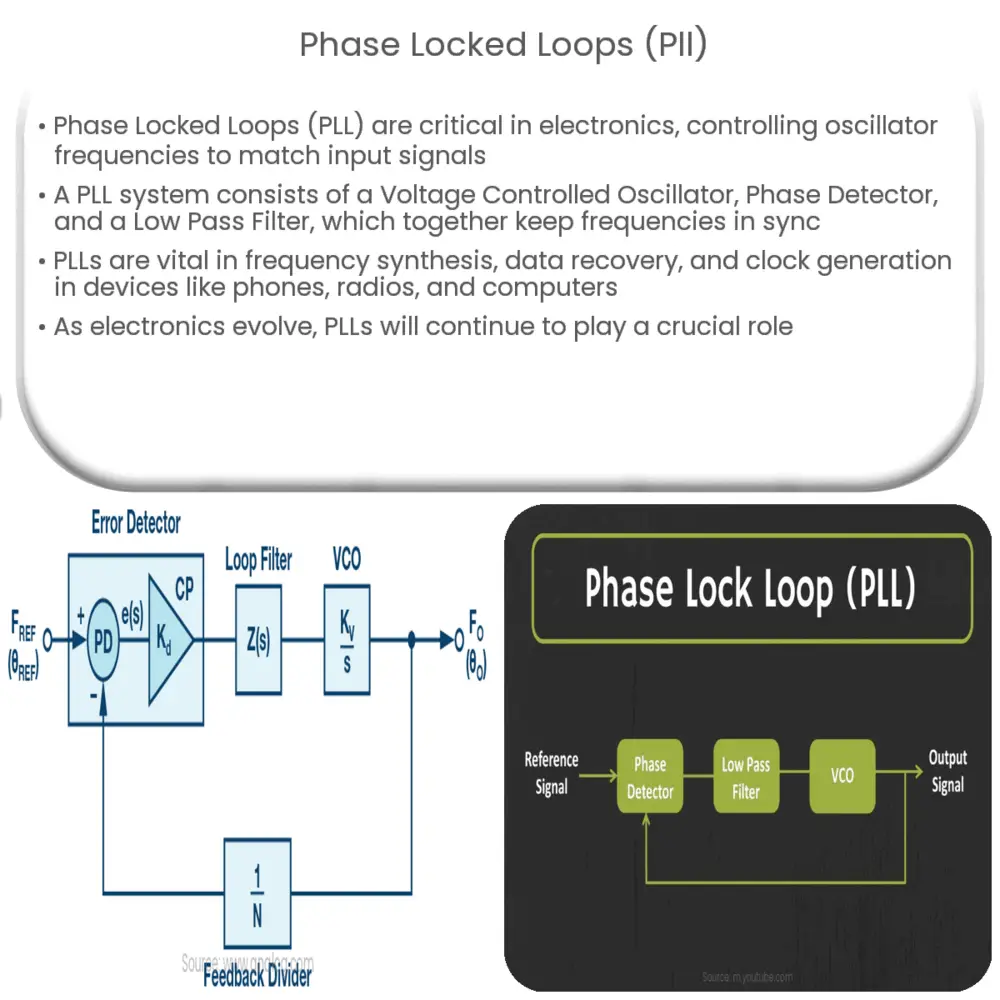Dive into the world of Phase Locked Loops (PLLs), understanding their operation, components, and widespread applications in modern electronics.

Understanding Phase Locked Loops (PLL)
Phase Locked Loops (PLL) is an essential component widely used in a plethora of electronic applications, predominantly in communication and control systems. This fundamental electronic system provides a mechanism to control the frequency of an oscillator to match the frequency of an input signal. Its functioning hinges upon a simple, yet effective feedback control principle.
Constituents of a PLL System
A typical PLL consists of three major components:
- Voltage Controlled Oscillator (VCO): This component generates an output frequency signal, which changes in relation to the input control voltage.
- Phase Detector (PD): PD is essentially a comparator that measures the phase difference between the input frequency and the VCO’s output frequency.
- Low Pass Filter (LPF): The LPF blocks high-frequency components from the PD’s output, leaving only
the slower varying DC component. This filtered output is utilized as a controlling voltage for the VCO.
Operation of a PLL
The PLL commences its operation when an input signal is fed into the phase detector. This signal is compared with the output signal from the VCO. The phase detector outputs a voltage proportional to the phase difference between these two signals. This output is then filtered by the LPF to yield a DC voltage that controls the VCO frequency. By this method, the PLL ensures that the VCO frequency is consistently in phase with the input frequency.
Applications of PLL
PLLs have widespread applications in the realm of electronics:
- Frequency Synthesis: PLLs are used in frequency synthesizers found in devices like radio receivers, mobile phones, and GPS systems.
- Data Recovery: In digital communication, PLLs help in recovering data from carrier signals.
- Clock Generation: Computer systems leverage PLLs for clock generation and distribution.
Conclusion
In conclusion, Phase Locked Loops (PLL) are instrumental in several electronic applications due to their ability to control and synchronize frequencies. These crucial systems highlight the importance of feedback control principles in modern electronics. Their use in frequency synthesis, data recovery, and clock generation, among other things, makes them indispensable in our digitally interconnected world. As electronics continue to evolve, so too will the sophisticated techniques that make these innovations possible, and PLLs will undoubtedly be at the forefront of this progress.

